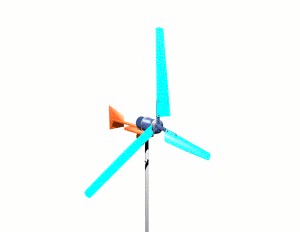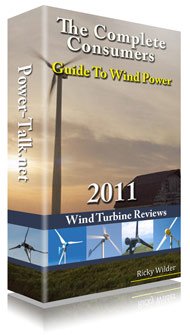HGC Engineering Strengthens its Tool Kit in Response to Evolving Regulatory Demands for Acoustic Assessments of Wind Turbine Noise
 Wind Turbine Noise, Wind Turbine Sound, Wind Turbine Activity
Wind Turbine Noise, Wind Turbine Sound, Wind Turbine Activity
The Ontario Ministry of the Environment (MOE) now requires Renewable Energy Approvals of wind projects to include acoustic audits of wind turbine noise emissions at the source, as defined by Canadian and International standards (CAN/CSA-61400-11 and IEC61400-11). Prior to this, typical approvals from the Ontario Ministry only required measurement at points of reception. This change is in keeping with evolving and more demanding regulatory assessment requirements being legislated in jurisdictions across Canada, the United States and around the world.
Why the change?
“Parallel to the growing adoption of wind farms across North America has come greater scrutiny of noise and health concerns around this renewable energy source,” said Brian Howe, President of HGC Engineering and an internationally recognized authority on wind turbine noise. “Because of the sensitive nature of these issues, acquiring precise and accurate acoustical data for analysis has never been more in demand or more critical for all concerned.”
There are a number of acoustic characteristics of wind turbine sound which have not traditionally been considered significant to overall sound levels, but are today nonetheless perceived to influence the perception of sound and the potential for annoyance. Some of these characteristics have been the subject of much debate and discussion, in particular with regards to their potential effects on residents living in the vicinity of wind developments. These include amplitude modulation of sound (blade swish); tonality, like those that can arise from mechanical components such as gearboxes; low frequency sound; as well as infrasound.
Low frequency and infrasonic noise can be most effectively measured and assessed when separated from overall wind turbine sound levels. Most jurisdictions around the world however, do not yet have environmental policies which offer comprehensive protocols and criteria for the measurement and assessment of low frequency emissions.
To further complicate matters, unlike most industrial or commercial noise sources, the sound emissions from wind turbines typically occur during wind conditions that can generate significant levels of background noise. Conventional acoustic instrumentation, normally used for the measurement of industrial noise sources, are prone, in wind development applications, to capturing erroneous acoustical data due to wind blowing over the microphone, particularly during high winds.
Consequently, in order to accurately measure sound levels restricted to wind turbine activity alone, specialized techniques and equipment have become necessary.
For some acoustic measurements, the Ontario Ministry of the Environment (as specified in CAN/CSA-61400-11 and IEC61400-11) now requires a microphone to be installed on a reflective surface at ground level with a large windscreen dome over a smaller conventional windscreen acting as both protection and as a way to limit turbulence at the microphone face in order to reduce false low frequency readings caused by high wind actions.
Until recently, no widely available commercial windscreen existed as defined by the standards. As a result, HGC Engineering initially researched and developed its own in-house solution. But recently Bruel & Kjær, a world-leading manufacturer of acoustic test and measurement systems introduced an out-of-the-box engineered solution that is performance calibrated and traceable to international standards. Subsequently, HGC Engineering acquired a pair of these windscreens upon their release in North America.
“Although these windscreens ensure our field measurement techniques comply with the new MOE audit requirements, it is important to point out that the methods called for in CAN/CSA-61400-11 and IEC61400-11 were not developed specifically for wind turbine low frequency and infrasound measurements,” notes Mr. Howe. “In fact, there is no established protocol for the measurement of infrasound from wind turbines.”
As a result, HGC Engineering continues to research and develop alternative techniques for low frequency and infrasound measurements which can more effectively filter out the influence of wind gusts on a field microphone’s acoustical readings. One sub-surface method that the company is currently field-testing shows significant promise. It involves the placement of a microphone in a below ground “chamber” and includes a dual windscreen arrangement — a primary windscreen around the microphone and a secondary foam layer shield mounted over the chamber itself.
“Unfortunately standards and practices around the world are playing catch-up to the rapidly evolving realities on the ground,” emphasized Mr. Howe. “The real acoustical engineering challenge we face today is developing innovative ways to more accurately capture, quantify and address the fundamentally subjective characteristics of wind turbine noise. As leaders in this area, we feel it’s our responsibility and obligation to be on top of, and pioneering these next-generation best practices and technologies well ahead of their adoption as a standard.”
About HGC Engineering
HGC Engineering is a North American pioneer and leader in the precision measurement and management of noise from wind turbine developments, with project assessments and reports completed for a growing international customer base. The consulting engineering group specializes in helping developers and municipalities address potential sound issues in communities surrounding wind farms. The group has also worked in partnership with Governments and Associations in developing policies and standards for assessing the noise impact of wind turbines.
About Brian Howe
Brian Howe, President of HGC Engineering is an internationally recognized authority on wind turbine noise. He is the current chair of the Canadian Standards Committee on Acoustic Noise Measurement of Wind Turbines. He was instrumental in developing Best Practices Guidelines for the Canadian Wind Energy Association for use in the development of Wind Energy projects. And he recently authored the Research Report on the Health Effects  Wind Turbines for the Ontario Ministry on the Environment.
Wind Turbines for the Ontario Ministry on the Environment.



Leave a Reply